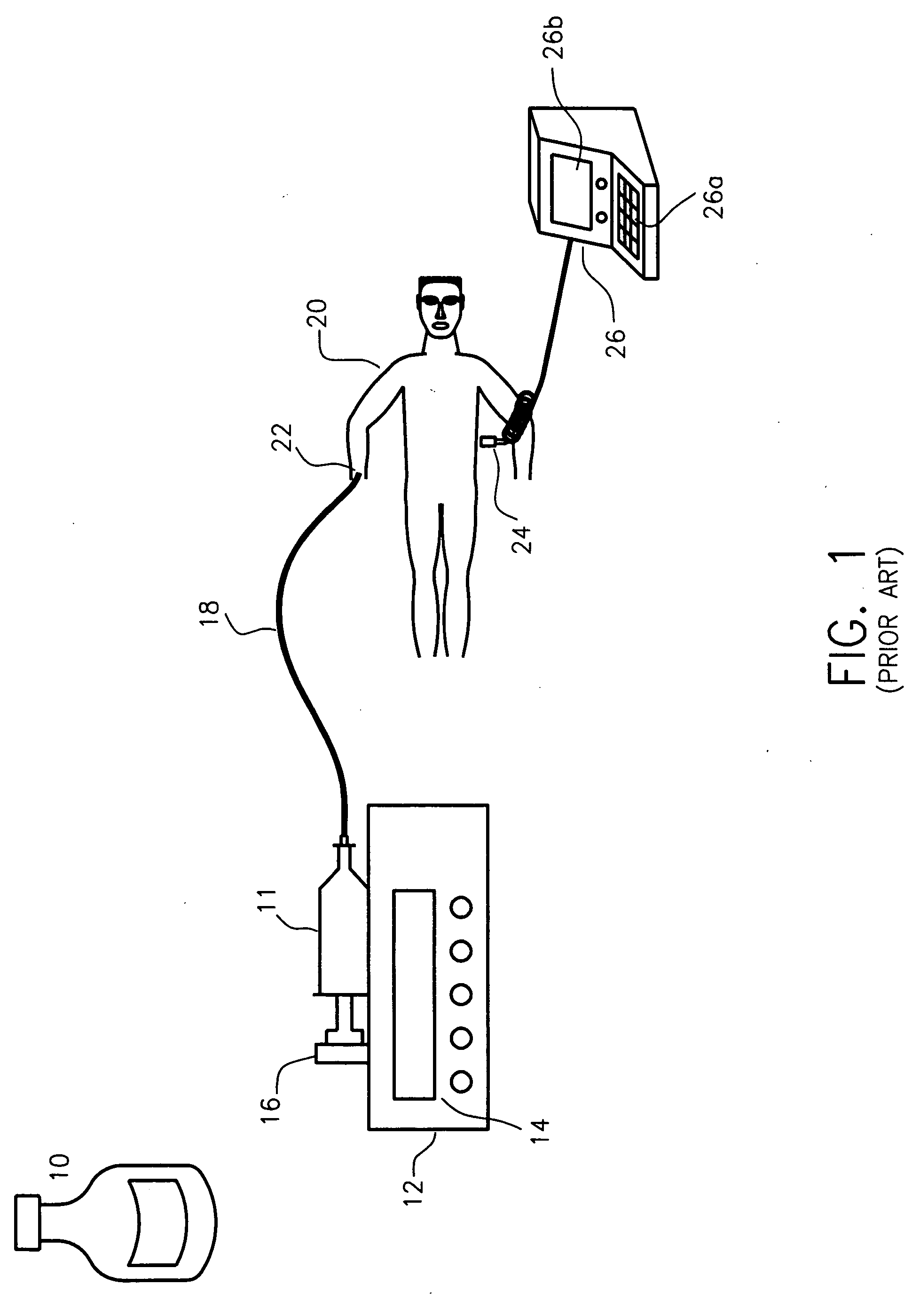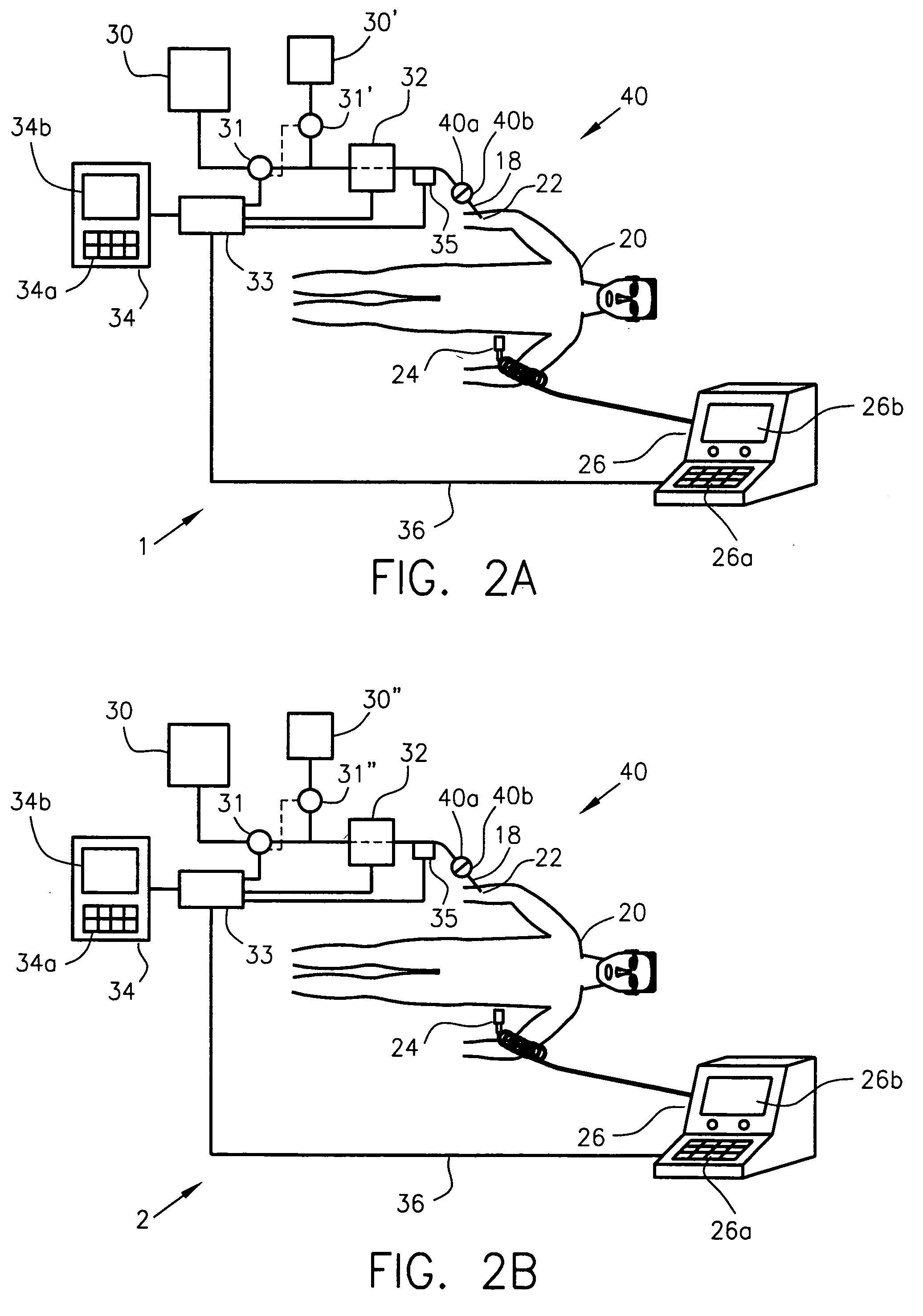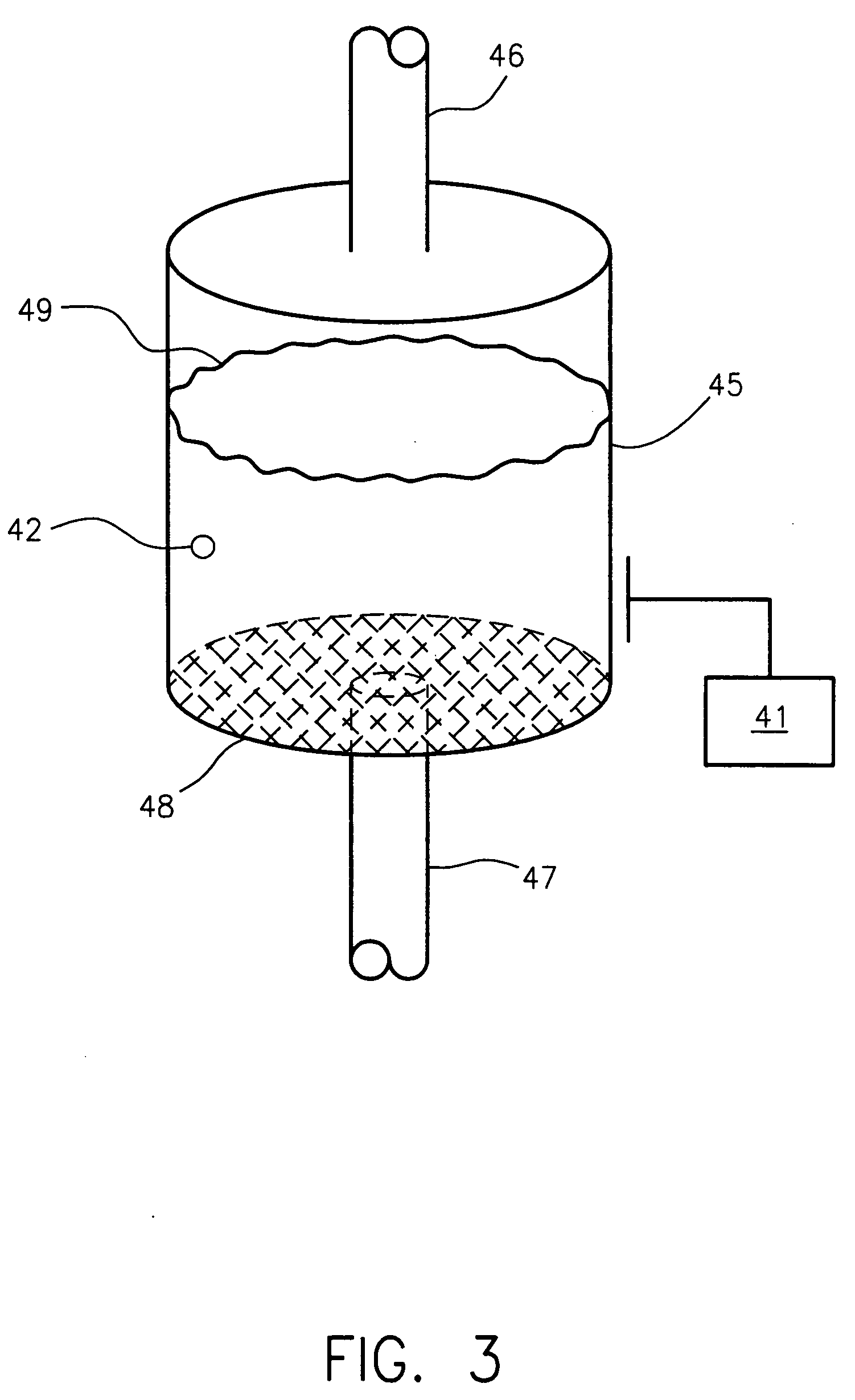Apparatus, system and method for generating bubbles on demand
a technology of apparatus and bubbles, applied in the field of apparatus, system and method for generating bubbles on demand, can solve the problems of extremely expensive equipment, human health risk, and the sound waves used during ultrasound procedures, but are relatively risk-free, and achieve the effect of facilitating a wide variety of imaging techniques and therapeutic procedures
- Summary
- Abstract
- Description
- Claims
- Application Information
AI Technical Summary
Benefits of technology
Problems solved by technology
Method used
Image
Examples
first embodiment
[0069] FIG. 3 illustrates the microbubble generator, one capable of generating microbubbles on demand when incorporated within the disclosed systems 1 and 2. It employs a gas-liquid interface and a means of disrupting that interface to create microbubbles of the desired diameter. More specifically, the microbubble generator includes an enclosure 45, a mechanism 41 for agitating the enclosure, two fluid path conduits 46 and 47 and, preferably, a filter 48. Designed to withstand the forces associated with vigorous shaking, the enclosure 45 is the container within which to agitate the liquid in the presence of a gas. The agitating mechanism 41 can be manifested in any number of ways, such as something akin to a dental amalgam mixer. Fluid path conduits 46 and 47 are preferably made from a flexible material. They should possess a degree of flexibility sufficient to permit container 45 to be shaken during normal operation without suffering any damage to either itself or its associated fl...
third embodiment
[0077] FIGS. 5A and 5B illustrate the microbubble generator. It too employs a gas-liquid interface and a means of disrupting that interface to create microbubbles of the appropriate diameter. More specifically, the microbubble generator includes an enclosure 56, a stirring element 59, a mechanism 57 for rotating the stirring element, two fluid path conduits 46 and 47 and, preferably, a filter 48. Enclosure 56 is the container in which the interaction between the liquid and gas takes place. Situated within enclosure, stirring element 59 is preferably submerged only partially in the liquid. Situated near the outlet conduit 47, filter 48 can again be implemented in any of the ways described in connection with the previous embodiments, including active filtering.
[0078] Stirring element 59 can be implemented as a partially coiled wire loop, a whisk or various other beating elements. For example, as shown in FIG. 5B, the stirring element may be composed of multiple small wires, as denoted...
fourth embodiment
[0084] FIG. 6 depicts the essential details of microbubble generator, one built to operate as part of the disclosed systems 1 and 2. More specifically, this microbubble generator includes a passage or nozzle 60 or an array of such nozzles. Preferably cylindrical in shape, the nozzle 60 features a plurality of nucleation sites. Each nucleation site 61 can take the form of a pit several microns in diameter, preferably on the order of 3 to 100 .mu.m. Each pit is formed in the inner wall of the nozzle 60, and would ideally be deep enough and of a profile such that the liquid does not wet down to the bottom during normal handling and preparation. Several alternative geometries are possible. Instead of a planned arrangement or layout of pits, the pattern of pits could be randomized.
[0085] Equipped with a microbubble generator of the type shown in FIG. 6, the systems of FIGS. 2A and 2B would operate generally as follows. In response to a control signal from controller 33, the pump 31 would...
PUM
 Login to View More
Login to View More Abstract
Description
Claims
Application Information
 Login to View More
Login to View More - R&D
- Intellectual Property
- Life Sciences
- Materials
- Tech Scout
- Unparalleled Data Quality
- Higher Quality Content
- 60% Fewer Hallucinations
Browse by: Latest US Patents, China's latest patents, Technical Efficacy Thesaurus, Application Domain, Technology Topic, Popular Technical Reports.
© 2025 PatSnap. All rights reserved.Legal|Privacy policy|Modern Slavery Act Transparency Statement|Sitemap|About US| Contact US: help@patsnap.com



